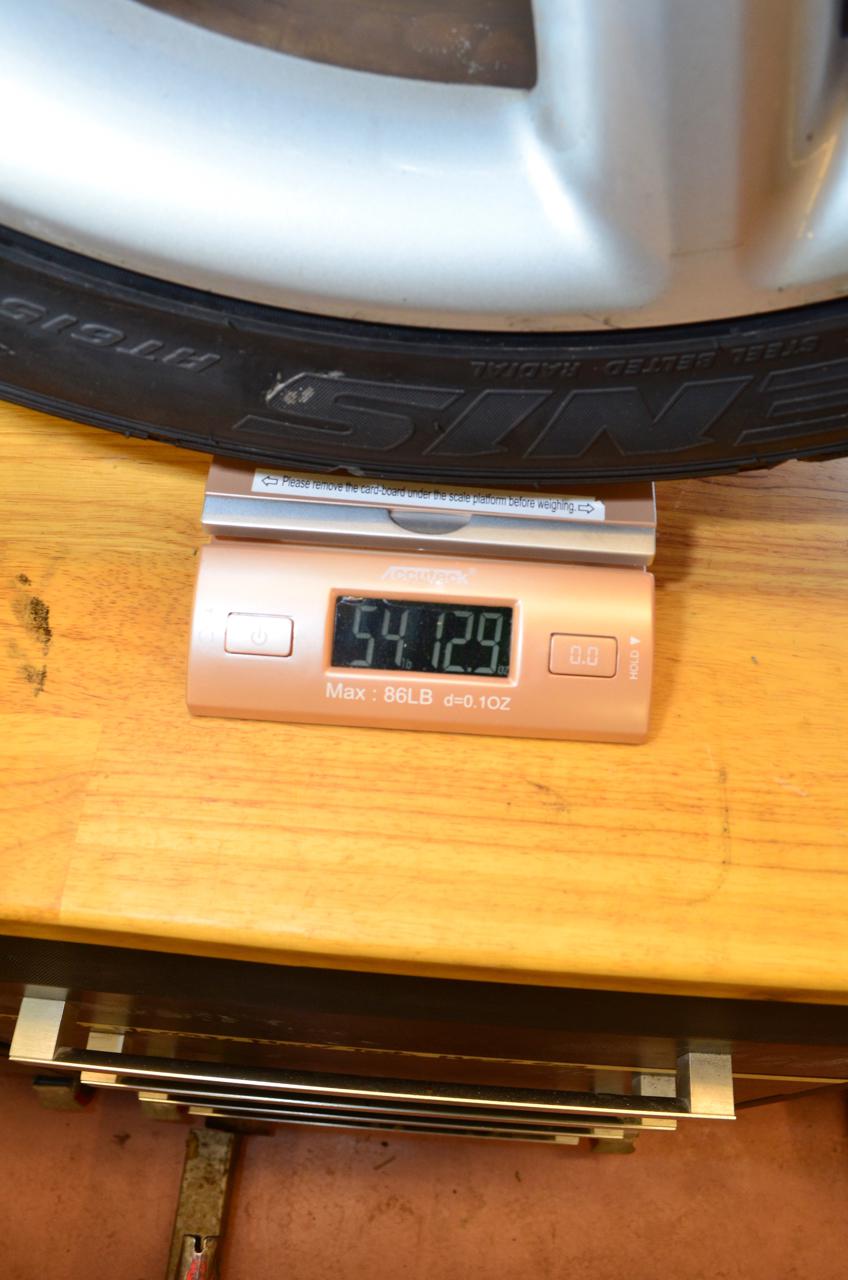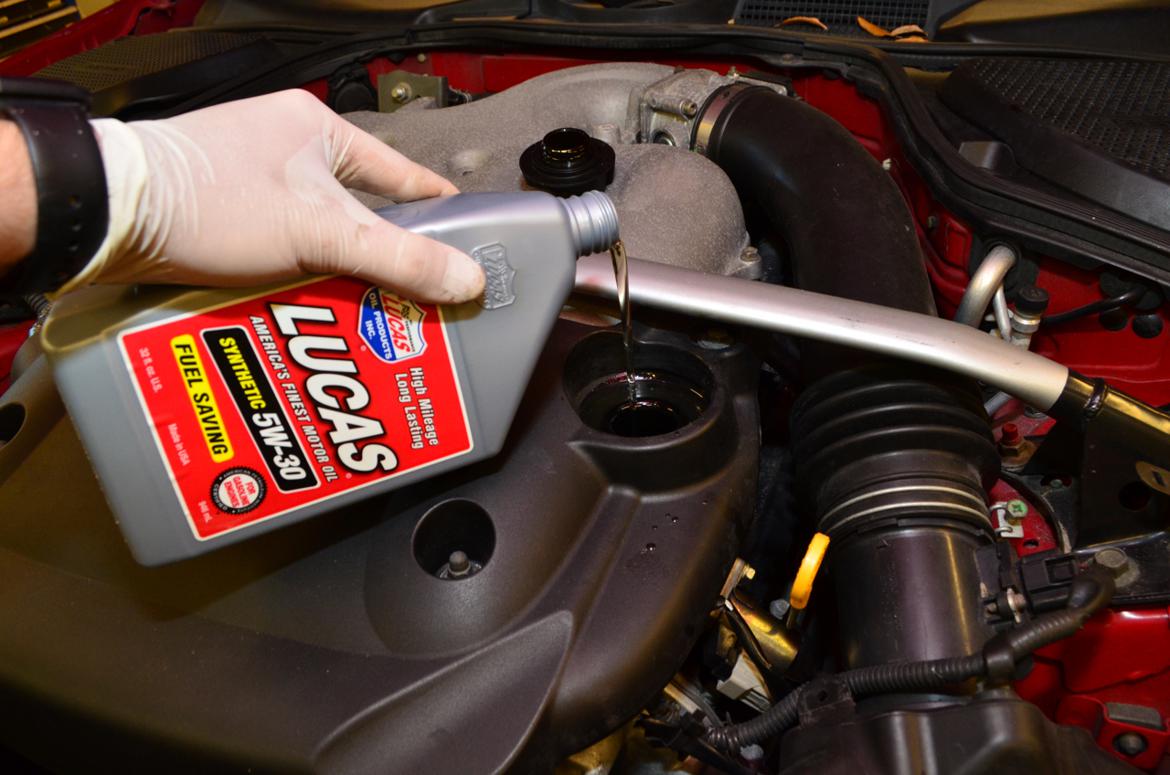This makes me happy




We mounted a set of fresh Falken Azenis RT615K+

Each wheel and tire weighed over 50 pounds together.

Time to check the oil in the differential.

Nothing bad there.



Once we were satisfied that the car was ready for a few laps, we torqued the lugs and set the tire pressures.
Before we could dive into the fun part of this Nissan 350Z project—adding a few hundred horsepower by swapping in a Chevy LS1 V8—we needed to take care of some housekeeping. Put simply, we needed to clean our room before we had company over.
No, that doesn’t mean 12-inch-wide wheels, big brakes, and fancy shocks for our Nissan. Those things will come with time, but we want to complete the swap with a bone-stock 350Z before we modify anything else. Before we do, we needed to baseline the car with its factory-installed V6. We’re pretty sure the V8 is going to make this car faster, but we want hard data that shows just how much faster.
But, it’s not wise to take a car straight from Craigslist to the racetrack without a thorough inspection, so that’s what we did first.
As soon as we put the car up on jack stands, one thing was immediately apparent: we needed tires. We’re planning to install wider wheels and tires in the future, but what came on the car (four mismatched and well-worn tires without brand names we’d heard of) weren’t even suitable for the drive to the track, never mind hot laps. So we ordered a set of Falken Azenis RT615K+ in sizes just barely wider than stock: 235/40ZR18 up front, and 255/40ZR18 in the rear. We’re big fans of these 200-treadwear street tires, and they’re a perfect fit for something like our 350Z. No, they aren’t the absolute fastest tire money can buy, but they’re not far off, and the price can’t be beat. Our standard size for comparison, the ubiquitous 205/50R15, sells for just $104.10 at Tire Rack, which is more than 21% cheaper than other 200-treadwear tires we’ve tested. We mounted the Falkens on the stock wheels, then weighed the wheel/tire package. The result: Our car was carrying more than 200 pounds of weight in the wheels and tires alone; we’ll definitely be able too reduce that once we upgrade from the factory wheels.
Once we’d addressed the tires, we moved on to the rest of the car. We started with the battery tie-down, which was present and tight. Next we topped up the brake fluid, and inspected the pads and rotors. The front pads had plenty of life left, but the rears would need replacement after a session on track. We also checked the car’s bushings and tie-rods, which all seemed good enough. Again, we’re not looking for the fastest time in the world, we’re just looking for a safe car to baseline.
While the car was up in the air, we also checked the rear differential fluid. Hey–you can never be too careful with an unknown Craigslist purchase with 209,000 miles on the clock. The fluid looked clean and full, so we put the fill plug back in for now. We did address the car’s other fluids, though. Up front, we added some Lucas Power Steering Fluid with Conditioners, which we’ve found actually does seem to prevent fading and foaming on track. We poured a bottle of Lucas Transmission Fix in the transmission. We hadn’t noticed any issues with our 350Z’s automatic, but figured this magic goo couldn’t hurt before our car’s track debut. It’s mostly known as a hail-mary solution to a dying automatic, but it’s a very good preventative treatment, too–especially, again, in a transmission of unknown provenance with 209,000 miles.
Last up, the engine: We changed out the dirt-brown oil that the car came with in favor of synthetic Lucas 5w-30 and a K&N filter. And, at this point, we probably know what you’re thinking: Why go through all that trouble for a drivetrain that’s getting thrown away after 10 laps? We had a few reasons. First, it’s never cool to be that person that blows up their car on track, especially when it’s their only ride home, too. But we had another reason: resale value. We’re not expecting to get rich by selling the stock drivetrain from our Nissan 350Z, but every little bit counts, especially when there’s a shiny V8 to pay for. By taking these simple preventative measures, we’ve got a much better chance of having something left at the end of our track day.
Displaying 1-2 of 2 commentsView all comments on the GRM forums
You'll need to log in to post.